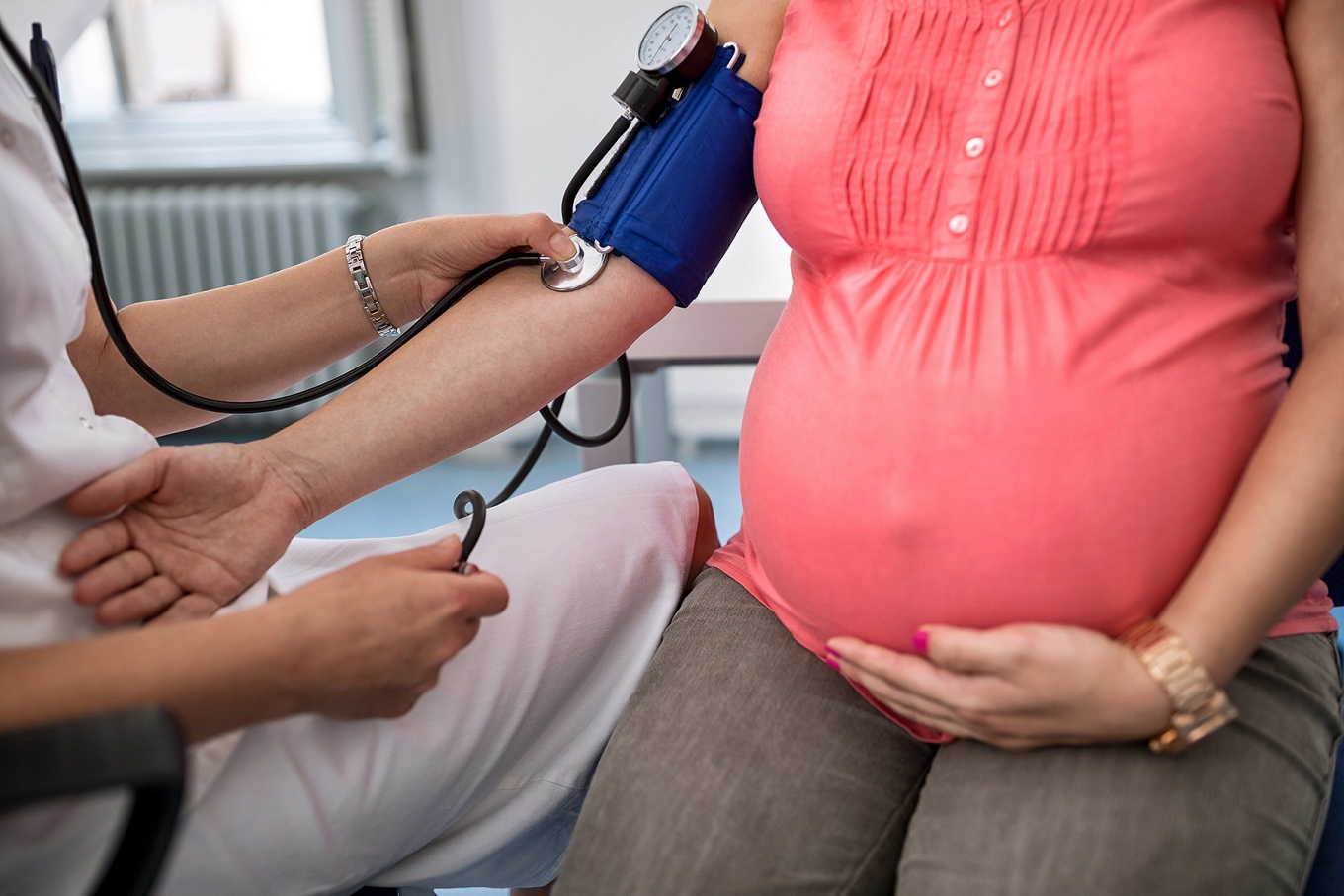research news
Blood pressure patterns during pregnancy predict later hypertension risk, study finds

By GRACE LAZZARA
Published April 3, 2025
Women with blood-pressure levels in a range considered clinically normal during pregnancy, and who have no drop in blood pressure in the middle of pregnancy, face an increased risk of developing hypertension in the five years after giving birth.
These women — about 12% of the population studied — would not be flagged as high-risk by current medical guidelines. New findings from UB research, however, could help identify them for early intervention.
The findings were recently published in the Journal of the American College of Cardiology: Advances. The study’s first author is Zhongzheng (Jason) Niu, assistant professor in the Department of Epidemiology and Environmental Health in UB’s School of Public Health and Health Professions and a Presidential Sustainability Solutions Fellow at the University of Southern California. Shohreh Farzan, associate professor of population and public health sciences at the Keck School of Medicine of USC, is the study’s senior author.
The work was supported by the National Institutes of Health and the Environmental Protection Agency.
Researchers collected data on blood pressure and other health factors from 854 women during pregnancy and up to five years postpartum. That longitudinal approach allowed them to map the trajectory of women’s blood pressure throughout pregnancy, and to spot a link between specific blood pressure patterns and hypertension several years later.
“Women’s health can change a lot between pregnancy and menopause, but it’s a period we know very little about,” Niu says. “Our study helps fill that gap in understanding when it comes to hypertension.”
An unexpected risk
For most women in the study (80.2%), systolic blood pressure (the higher number in a blood pressure reading) remained low throughout pregnancy. In 7.4% of women, blood pressure started out high, dropped during the second trimester, then increased again.
A third group of women (12.4%) had slightly elevated systolic blood pressure that remained at a healthy level throughout pregnancy, but did not drop during the second trimester. Compared to the first group, these women faced a 4.91 times higher risk of hypertension in the five years after giving birth.
“This group of women would not be identified as having higher long-term hypertension risk by any of the current clinical criteria, since their blood pressure remained below diagnostic thresholds, and most did not have other traditional risk factors,” says Farzan.
The findings suggest that tracking blood pressure patterns during pregnancy could help identify this underrecognized group and plan interventions that may prevent cardiovascular disease.
Understanding women’s heart health
These findings come at a time when both the American Heart Association (AHA) and the American College of Obstetricians and Gynecologists are increasing their focus on women’s heart health. After submitting the results to the AHA EPI|Lifestyle meeting in 2023, Niu received the organization’s Trudy Bush Fellowship for Cardiovascular Disease Research in Women’s Health.
Simple changes in clinical practice can help identify and treat this high-risk group, Niu says. Clinicians can map blood pressure throughout pregnancy and follow up with women who lack a second-trimester dip, even if their readings stay within the normal range. The AHA, which updated hypertension cutoffs for the general population in 2017, may also consider adjusting its guidelines for blood pressure during pregnancy.
Additional studies are needed to replicate the findings and to learn more about women in both at-risk groups. Niu, Farzan and their colleagues are also exploring whether environmental exposures — including air pollution, heavy metals, and per- and polyfluoroalkyl substances (PFAS), also known as “forever chemicals” — are linked to changes in blood pressure patterns during and after pregnancy.
